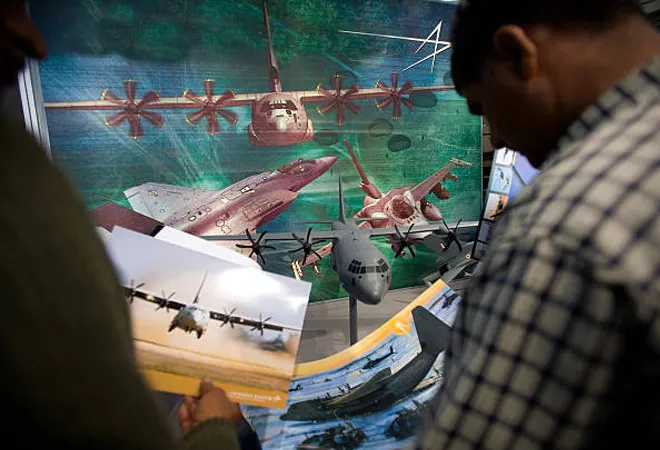
This piece is part of the essay series,
Amrit Kaal 1.0: Budget 2023
Finance Minister Nirmala Sitharaman has enhanced the allocation to India’s defence budget for fiscal 2023-24 by
13 percent to INR 5.94 lakh crore, up from INR 5.25 lakh crore in fiscal 2022-23. Of this, INR 1.62 lakh crore has been allocated towards capital expenditure, including the purchase of new weapons, aircraft, warships, and other military equipment. This constitutes
an increase of 7 percent over the current fiscal’s INR 1.52 lakh crore, but is almost unchanged in absolute terms given an average inflation rate of around 6 percent over the current fiscal year. While a lot has been said and written on the quantum of the overall defence budget and the capital outlay within it, this article shall focus on a few ways in which the limited funds can be best utilised.
The enhanced allotment at the budget estimate stage is well-advised, as it allows practicable and optimal utilisation of the allotted budget, and more is achievable with smaller sums.
Border Infrastructure
While the budgetary requirements to cater to India’s national security challenges can be debated, the seemingly humble outlay of INR 5,000 crore towards the capital expenditures of the Border Roads Organisation (BRO) must not be overlooked. The figure, in fact, represents a doubling of the agency’s capital budget over the last two years from INR 2,500 crore in fiscal 2021-22, as well as a 43 percent increase over the allocation for fiscal 2022-23.
The enhanced allotment at the budget estimate stage is well-advised, as it allows practicable and optimal utilisation of the allotted budget, and more is achievable with smaller sums. With numerous projects sanctioned in various departments, procedural red-tape and incapability in execution is causing huge cost overruns every year.
The current budget allocation to BRO ab initio will help to arrest this trend and will set a precedent for other departments to emulate. In this regard, the Ministry of Defence’s (MoD) focus on
“creating strategically important assets like Sela Tunnel, Nechipu Tunnel and Sela-Chhabrela Tunnel” to increase border connectivity, is indeed welcome.
Air Connectivity
Given the prudence in preparing for more frequent and lengthier border standoffs with China,
development of advanced landing grounds (ALG) assumes particular importance. This is required in addition to the construction of all-weather roads and tunnels.
Although such a declaration in the budget is, in itself, not strictly necessary, the government would do well to ensure proper funding and oversight of each of these projects.
While the budget announced the revival of
50 additional airports, helipads, water aero drones, and ALGs to improve regional air connectivity, it stops short of declaring specific budgetary provisions for these. Although such a declaration in the budget is, in itself, not strictly necessary, the government would do well to ensure proper funding and oversight of each of these projects.
Research and Development
With a nominal increase of only 9 percent on year to INR 23,264 crore in the Defence Research and Development Organisation’s budget, research and development finance is inadequately provided for. Further, little is known of the status of the MoD’s Technology Development Fund launched last year. To be sure, the MoD has allotted INR 116 crore and INR 45 crore toward its technological flagship Innovations for Defence Excellence and Defence Testing Infrastructure Scheme respectively, and though the former seems to be displaying some potential with the signing of over a hundred contracts, it is likely to require larger allocations
to produce the results the military expects. Till then, the armed forces must implement methods to maintain their operational advantage despite having to use hardware that is neither fit for purpose nor best in class.
The government must realise that a big reason for the under-utilisation of funds provided under the “Make Procedure” in India—with INR 122 crores left unused last year—is the long and dreary selection process for novel technologies to be selected and, thereafter, purchased. On the other hand, this situation provides a tailor-made opportunity for the Indian private sector to prove its mettle by stepping up to the challenge through the provision of innovative and cost-effective solutions to the armed forces despite the difficulties.
Small Arms and Equipment for Soldiers
While India has been the third-highest military spender
after the US and China since 2020, both those countries have such a lead over India in defence spending and armed forces modernisation that India is left with stark options. This isn’t necessarily a negative as it shall force our armed forces to prepare to secure India with the resources available, as well as to prioritise local acquisitions over their costlier Western substitutes.
While India has been the third-highest military spender after the US and China since 2020, both those countries have such a lead over India in defence spending and armed forces modernisation that India is left with stark options.
The message from the Galwan impasse with the Chinese, and encounters with equipped and trained Pakistani terrorists, is that these adversaries still need to be fought with courage and sacrifice. Equipping the soldier who performs this duty does not require as much funding as cutting-edge platforms, and must be accorded the highest priority.
Conclusion
Whether it is the funding and execution of border infrastructure and air connectivity projects, the easing of processes to reduce the gestation period from conception to selection and purchase involved in hi-tech private sector initiatives, or improvements in the arming of troops on the ground—all of these present relatively inexpensive low-hanging fruits, which can be pushed by the government and the defence ecosystem despite the limited availability of overall funding to the sector, as well as the restricted finance for acquisition of advanced weapon systems and platforms.
The views expressed above belong to the author(s). ORF research and analyses now available on Telegram! Click here to access our curated content — blogs, longforms and interviews.



 This piece is part of the essay series,
This piece is part of the essay series,  PREV
PREV


